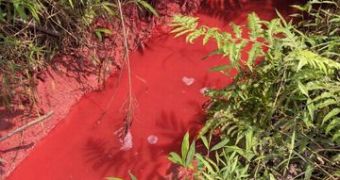Water pollution is a large set of adverse effects upon water bodies such as lakes, rivers, oceans and groundwater caused by human activities. Although natural phenomena such as volcanoes, storms, earthquakes etc. also cause major changes in water quality and the ecological status of water, these are not deemed to be pollution.
Industries discharge a variety of pollutants in their wastewater, including heavy metals, organic toxins, oils, nutrients, and solids. Many of the chemical substances are toxic and can obviously produce waterborne diseases in either human or animal hosts. Chromium, like some of its chemical cousins, can be either beneficial or harmful to living things, depending on its form, concentration, and method of absorption. Chromium III, for example, the metal's natural state, is stable and an essential nutrient.
On the other hand, hexavalent chromium-or Cr(VI)-is highly reactive and a potential carcinogen if inhaled or consumed in contaminated fish or polluted water. Used in the manufacturing of videotapes, dyes, paints, and other industrial applications, Cr(VI) achieved notoriety several years ago as the subject of a well-publicized class-action lawsuit in California, which was depicted in the movie Erin Brockovich.
Up to now, removing Cr(VI) from the environment has been difficult and messy, requiring treatment with acid, which itself can degrade local water quality.
Yesterday, researchers may have found a sugar-coated answer to a toxic waste problem. At a presentation at the semiannual meeting of the American Chemical Society in Chicago, Illinois, a team of chemists reported that a sugar-based solution effectively reduced the threat of the heavy metal chromium, without creating new pollution headaches in the process.
The new cleaning process consists of two common sugars, fructose and sucrose.
Chemist and lead researcher Bryan Bilyeu of Xavier University of Louisiana in New Orleans reported that the fructose mix removed 94% of Cr(VI) from contaminated wastewater (sucrose achieved a 93% removal) and soil samples in the lab. Based on these "very preliminary" results, he says chromium-using industries might eventually treat their wastewater with sugar solutions to convert enough Cr(VI) into Cr(III)-which is about 1000 times less toxic-to meet or exceed environmental requirements.
The main advantage of this newly found answer is that, instead of the acid-disposal problems that exist with current chromium treatment methods, the waste sugars would pose no hazard.

 14 DAY TRIAL //
14 DAY TRIAL //